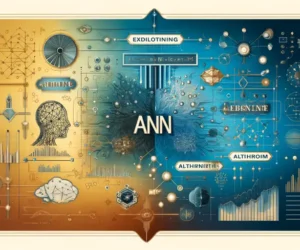
High Bias in Machine Learning Models: Overfitting Connection

- Use a Larger and More Diverse Training Dataset to Reduce Bias
- Regularize the Model by Adding Penalty Terms to the Loss Function
- Increase the Complexity of the Model to Capture More Patterns and Reduce Bias
- Implement Cross-Validation Techniques to Evaluate the Model's Performance
- Tune the Hyperparameters of the Model to Find the Right Balance
- Apply Feature Engineering to Extract More Meaningful Information
- Try Different Machine Learning Algorithms
- Ensemble Multiple Models to Leverage Their Collective Predictions
- Investigate and Address Data Quality Issues
- Seek Expert Advice or Consult with Experienced Data Scientists
Use a Larger and More Diverse Training Dataset to Reduce Bias
A larger and more diverse training dataset can significantly help in reducing high bias in machine learning models. When a model is trained on a limited dataset, it might not capture the underlying patterns adequately, leading to high bias. Expanding the dataset helps the model learn a broader spectrum of features, thereby reducing bias.
Diverse data ensures that the model is exposed to various scenarios and conditions, which improves its generalization capabilities. For example, in a facial recognition system, including images of people from different ethnic backgrounds, age groups, and lighting conditions can help the model perform better across a wide range of inputs.
Moreover, collecting data from different sources and environments can further enrich the training set, making the model robust against overfitting. Ensuring that the data is representative of real-world scenarios is crucial for developing a reliable machine learning model.
Regularize the Model by Adding Penalty Terms to the Loss Function
Regularization is a powerful technique to address high bias in machine learning models. By adding penalty terms to the loss function, regularization discourages the model from fitting the noise in the training data. This helps in reducing both bias and variance, leading to a more generalized model.
There are two main types of regularization: L1 regularization (Lasso) and L2 regularization (Ridge). L1 regularization adds the absolute value of the coefficients to the loss function, which can result in sparse models by driving some coefficients to zero. L2 regularization adds the squared value of the coefficients to the loss function, which helps in distributing the impact of each feature more evenly.
from sklearn.linear_model import Ridge, Lasso
# Sample data
X = [[1, 2], [2, 3], [3, 4], [4, 5]]
y = [0, 1, 0, 1]
# Lasso (L1) Regularization
lasso = Lasso(alpha=0.1)
lasso.fit(X, y)
print("Lasso Coefficients:", lasso.coef_)
# Ridge (L2) Regularization
ridge = Ridge(alpha=0.1)
ridge.fit(X, y)
print("Ridge Coefficients:", ridge.coef_)Regularization techniques help in simplifying the model, which prevents overfitting and leads to better performance on unseen data.
Increase the Complexity of the Model to Capture More Patterns and Reduce Bias
Sometimes, increasing the complexity of the model can help in reducing high bias. A model that is too simple may not capture the underlying patterns in the data adequately, leading to high bias. By increasing the number of parameters or adding more layers to a neural network, the model can learn more complex patterns.
For example, if you are using a linear model and it exhibits high bias, switching to a polynomial model might help in capturing the non-linear relationships in the data. Similarly, adding more layers to a neural network can help in learning hierarchical representations of the data.
However, it is important to strike a balance between model complexity and overfitting. While a more complex model can reduce bias, it can also increase variance if not regularized properly. Therefore, using techniques like cross-validation and regularization is crucial to maintain this balance.
Implement Cross-Validation Techniques to Evaluate the Model's Performance
Cross-validation is a technique used to evaluate the performance of a machine learning model by splitting the data into multiple folds. This method helps in assessing how well the model generalizes to unseen data and prevents overfitting. By using cross-validation, you can identify high bias and make necessary adjustments to the model.
Types of Cross-Validation Techniques
There are several types of cross-validation techniques, including k-fold cross-validation, leave-one-out cross-validation (LOOCV), and stratified k-fold cross-validation. K-fold cross-validation divides the data into k equally sized folds, trains the model on k-1 folds, and validates it on the remaining fold. This process is repeated k times, and the results are averaged to get an overall performance metric.
LOOCV is a special case of k-fold cross-validation where k is equal to the number of observations. This method is computationally intensive but provides an unbiased estimate of model performance. Stratified k-fold cross-validation ensures that each fold has a similar distribution of target classes, which is particularly useful for imbalanced datasets.
from sklearn.model_selection import cross_val_score
from sklearn.linear_model import LogisticRegression
# Sample data
X = [[1, 2], [2, 3], [3, 4], [4, 5]]
y = [0, 1, 0, 1]
# Logistic Regression with K-Fold Cross-Validation
model = LogisticRegression()
scores = cross_val_score(model, X, y, cv=5)
print("Cross-Validation Scores:", scores)Cross-validation provides a reliable estimate of the model's performance and helps in fine-tuning hyperparameters to achieve the right balance between bias and variance.
Tune the Hyperparameters of the Model to Find the Right Balance
Hyperparameter tuning is essential for optimizing the performance of a machine learning model. By adjusting hyperparameters, you can find the right balance between bias and variance, leading to a more accurate and generalized model. Common techniques for hyperparameter tuning include grid search, random search, and Bayesian optimization.
Regularization
Regularization is a key hyperparameter that can be tuned to prevent overfitting and reduce bias. By adjusting the regularization parameter, you can control the complexity of the model and ensure that it generalizes well to unseen data. For example, in Ridge and Lasso regression, the regularization parameter (alpha) can be tuned to find the optimal value that minimizes the loss function.
Feature Selection
Feature selection is another important aspect of hyperparameter tuning. By selecting the most relevant features, you can improve the model's efficiency and accuracy. Techniques like recursive feature elimination (RFE) and feature importance scores can help in identifying the best features for the model.
Ensemble Methods
Ensemble methods, such as Random Forest and Gradient Boosting, combine multiple models to improve predictive performance. Hyperparameters like the number of trees, learning rate, and maximum depth can be tuned to achieve the best results. Ensemble methods help in reducing both bias and variance by leveraging the strengths of multiple models.
from sklearn.model_selection import GridSearchCV
from sklearn.ensemble import RandomForestClassifier
# Sample data
X = [[1, 2], [2, 3], [3, 4], [4, 5]]
y = [0, 1, 0, 1]
# Hyperparameter Tuning with Grid Search
param_grid = {'n_estimators': [50, 100, 200], 'max_depth': [None, 10, 20]}
grid_search = GridSearchCV(RandomForestClassifier(), param_grid, cv=5)
grid_search.fit(X, y)
print("Best Hyperparameters:", grid_search.best_params_)Hyperparameter tuning helps in finding the optimal configuration for the model, leading to improved performance and reduced bias.
Apply Feature Engineering to Extract More Meaningful Information
Feature engineering involves creating new features or transforming existing ones to improve the performance of a machine learning model. By extracting more meaningful information from the data, you can reduce bias and enhance the model's predictive power. Feature engineering is a crucial step in the machine learning pipeline and can significantly impact the model's accuracy.
Create New Features
Creating new features involves deriving additional attributes from the existing data. For example, in a dataset with date information, you can create new features like the day of the week, month, or quarter. These new features can provide valuable insights and improve the model's ability to capture patterns.
Transform Variables
Transforming variables involves applying mathematical or statistical operations to the data. For example, log transformation can be used to handle skewed distributions, while polynomial transformations can help capture non-linear relationships. These transformations can enhance the model's ability to learn complex patterns in the data.
Encode Categorical Variables
Encoding categorical variables is essential for including them in a machine learning model. Techniques like one-hot encoding, label encoding, and target encoding can be used to convert categorical data into numerical values. Proper encoding ensures that the model can interpret and utilize categorical features effectively.
import pandas as pd
from sklearn.preprocessing import OneHotEncoder, PolynomialFeatures
# Sample data
data = {'Category': ['A', 'B', 'A', 'C'], 'Value': [10, 20, 15, 25]}
df = pd.DataFrame(data)
# One-Hot Encoding
encoder = OneHotEncoder()
encoded_data = encoder.fit_transform(df[['Category']]).toarray()
encoded_df = pd.DataFrame(encoded_data, columns=encoder.get_feature_names_out(['Category']))
print(encoded_df)
# Polynomial Transformation
poly = PolynomialFeatures(degree=2)
transformed_data = poly.fit_transform(df[['Value']])
transformed_df = pd.DataFrame(transformed_data, columns=poly.get_feature_names_out(['Value']))
print(transformed_df)Feature engineering helps in creating a richer and more informative dataset, leading to improved model performance and reduced bias.
Try Different Machine Learning Algorithms
Trying different machine learning algorithms can help in finding the best model for reducing bias. Different algorithms have varying strengths and weaknesses, and experimenting with multiple algorithms can provide insights into which one performs best on your specific dataset. By comparing the performance of different models, you can identify the algorithm that offers the best balance between bias and variance.
For example, if a linear model exhibits high bias, switching to a more complex algorithm like a decision tree or a neural network might help in capturing the underlying patterns in the data.
Similarly, ensemble methods like Random Forest and Gradient Boosting can provide improved performance by combining the predictions of multiple models.
It is essential to evaluate each algorithm's performance using cross-validation and appropriate metrics to ensure that the selected model generalizes well to unseen data. This iterative process helps in identifying the most suitable algorithm for your problem, leading to better results.
Ensemble Multiple Models to Leverage Their Collective Predictions
Ensemble methods combine the predictions of multiple models to improve the overall performance. By leveraging the strengths of different models, ensemble methods can reduce bias and variance, leading to more accurate and robust predictions. Techniques like bagging, boosting, and stacking are commonly used for creating ensemble models.
The Power of Ensemble Learning
Ensemble learning involves training multiple base models and combining their predictions to make a final decision. This approach helps in reducing the errors of individual models and improves the overall performance. Ensemble methods can be particularly effective in reducing bias and variance, as they leverage the diverse strengths of different models.
Types of Ensemble Learning
There are several types of ensemble learning methods, including bagging, boosting, and stacking. Bagging involves training multiple models on different subsets of the data and averaging their predictions. Boosting sequentially trains models to correct the errors of previous models, leading to improved performance. Stacking combines the predictions of multiple base models using a meta-model to make the final decision.
Benefits of Ensemble Learning
Ensemble methods offer several benefits, including improved predictive performance, robustness, and reduced bias and variance. By combining the strengths of multiple models, ensemble methods can handle complex patterns and provide more accurate predictions. Ensemble learning is a powerful technique for addressing high bias in machine learning models.
from sklearn.ensemble import RandomForestClassifier, GradientBoostingClassifier
from sklearn.ensemble import VotingClassifier
# Sample data
X = [[1, 2], [2, 3], [3, 4], [4, 5]]
y = [0, 1, 0, 1]
# Base models
rf = RandomForestClassifier()
gb = GradientBoostingClassifier()
# Ensemble model using voting
ensemble = VotingClassifier(estimators=[('rf', rf), ('gb', gb)], voting='soft')
ensemble.fit(X, y)
predictions = ensemble.predict(X)
print("Ensemble Predictions:", predictions)Ensemble methods enhance the predictive power of machine learning models by combining multiple models, leading to more accurate and reliable results.
Investigate and Address Data Quality Issues
Data quality plays a crucial role in the performance of machine learning models. Poor data quality can lead to high bias and negatively impact the model's predictions. Investigating and addressing data quality issues is essential for building accurate and reliable models.
Analyze the Data
Analyzing the data involves examining its structure, distribution, and quality. Identifying patterns, outliers, and anomalies can help in understanding the data better. Data visualization techniques, such as histograms, box plots, and scatter plots, can provide valuable insights into the data's characteristics.
Cleanse and Preprocess the Data
Data cleansing involves handling missing values, outliers, and inconsistencies in the data. Techniques like imputation, outlier removal, and data transformation can improve the quality of the data. Proper data preprocessing ensures that the model can learn from clean and consistent data, leading to better performance.
Perform Feature Engineering
Feature engineering involves creating new features or transforming existing ones to improve the model's performance. By extracting more meaningful information from the data, feature engineering can help in reducing bias and enhancing the model's predictive power. Techniques like encoding categorical variables, scaling numerical features, and creating interaction terms can be employed.
import pandas as pd
from sklearn.preprocessing import StandardScaler, OneHotEncoder
# Sample data
data = {'Category': ['A', 'B', 'A', 'C'], 'Value': [10, 20, 15, 25]}
df = pd.DataFrame(data)
# One-Hot Encoding
encoder = OneHotEncoder()
encoded_data = encoder.fit_transform(df[['Category']]).toarray()
encoded_df = pd.DataFrame(encoded_data, columns=encoder.get_feature_names_out(['Category']))
print(encoded_df)
# Scaling
scaler = StandardScaler()
scaled_data = scaler.fit_transform(df[['Value']])
scaled_df = pd.DataFrame(scaled_data, columns=['Scaled_Value'])
print(scaled_df)Addressing data quality issues is crucial for building accurate and reliable machine learning models. By ensuring clean and consistent data, you can reduce bias and improve the model's performance.
Seek Expert Advice or Consult with Experienced Data Scientists
Seeking expert advice or consulting with experienced data scientists can provide valuable insights and guidance for reducing bias in machine learning models. Experts can offer practical solutions, recommend best practices, and help identify potential issues that may not be apparent.
Expert Insights
Data scientists with experience in building and deploying machine learning models can provide valuable insights into the best techniques and approaches for reducing bias. They can help in selecting the right algorithms, tuning hyperparameters, and implementing effective regularization techniques.
Practical Solutions
Consulting with experts can lead to practical solutions for addressing high bias. Experts can recommend specific methods for data preprocessing, feature engineering, and model evaluation. They can also provide guidance on handling imbalanced datasets, dealing with missing values, and optimizing model performance.
Best Practices
Experienced data scientists can share best practices for building and maintaining machine learning models. These practices include regular validation, continuous monitoring, and updating the model as new data becomes available. By following best practices, you can ensure that the model remains accurate and reliable over time.
import pandas as pd
from sklearn.preprocessing import StandardScaler, OneHotEncoder
# Sample data
data = {'Category': ['A', 'B', 'A', 'C'], 'Value': [10, 20, 15, 25]}
df = pd.DataFrame(data)
# One-Hot Encoding
encoder = OneHotEncoder()
encoded_data = encoder.fit_transform(df[['Category']]).toarray()
encoded_df = pd.DataFrame(encoded_data, columns=encoder.get_feature_names_out(['Category']))
print(encoded_df)
# Scaling
scaler = StandardScaler()
scaled_data = scaler.fit_transform(df[['Value']])
scaled_df = pd.DataFrame(scaled_data, columns=['Scaled_Value'])
print(scaled_df)Consulting with experts can provide valuable insights and practical solutions for reducing bias in machine learning models, leading to more accurate and reliable predictions.
If you want to read more articles similar to High Bias in Machine Learning Models: Overfitting Connection, you can visit the Bias and Overfitting category.



You Must Read